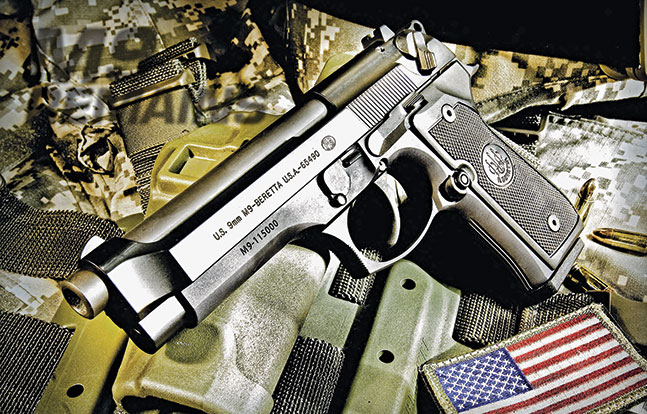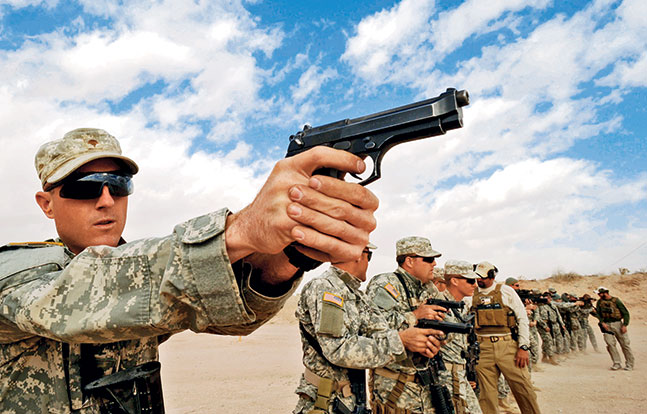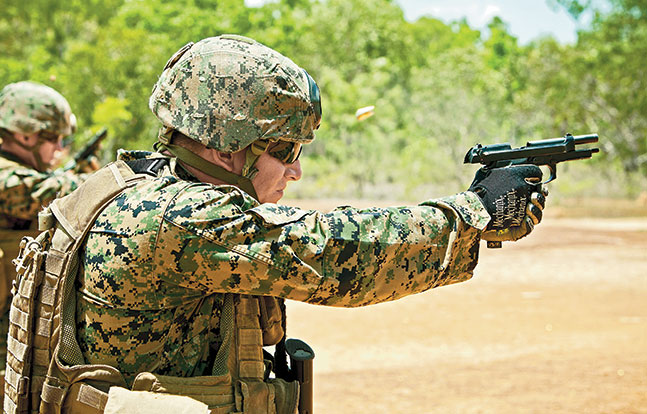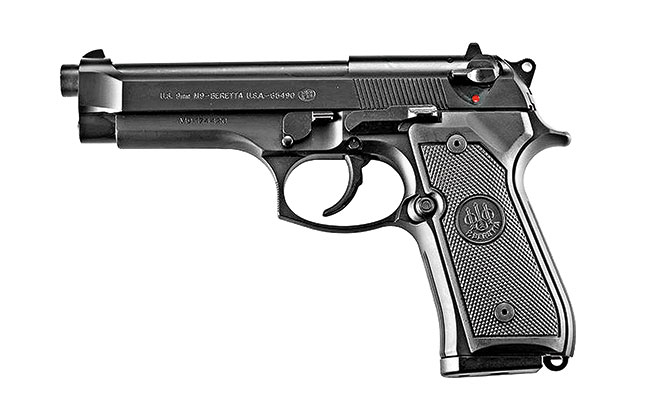At the end of July 2014, Beretta Defense Technologies (BDT) announced that the U.S. Army has purchased additional M9 pistols from Beretta USA. This is the sixth delivery order to date. Under separate contracts, Beretta USA is also supplying M9 parts and components.
- RELATED: The ARX100: Beretta’s Tenacious Tactical Rifle
- RELATED: Gun Review: Beretta 1301 Tactical 12 Gauge
In September 2012, the Army awarded Beretta USA a five-year contract for up to 100,000 pistols. Gabriele de Plano, the vice president of military marketing and sales at Beretta USA, said, “To date, Beretta has delivered some 600,000 M9 pistols to the Department of Defense, with about 425,000 pistols going to the Army.” The new five-year contract is an “Indefinite Delivery/Indefinite Quantity” (ID/IQ) for up to 100,000 pistols. Of that total quantity, Beretta has received six delivery orders from the Army, which manages the contract, for almost 18,000 pistols. Another order for 6,000 pistols is also in the works, but has not been yet released by the Army. “BDT plans to start delivery in October 2014,” added de Plano.
Advertisement — Continue Reading Below
Still Fighting Strong
The U.S. Air Force, Navy and Army have used the M9 since it was adopted in 1985 as a replacement sidearm for the aging M1911A1, which was at the end of its life cycle. Since 1987, the M9 has been manufactured at Beretta USA’s production facility in Accokeek, Maryland. Recently, Beretta USA announced that both manufacturing and research and development will move to Tennessee next year, while Beretta USA’s headquarters will remain in Maryland.
“The average M9 … runs for about 17,500 rounds without a stoppage.”
Advertisement — Continue Reading Below
The M9—a military version of the Beretta 92FS—was a major departure from the M1911, the traditional U.S. military sidearm since 1911. The M1911 pistol has a single-stack magazine with a capacity of 7+1 rounds, employs a single-action trigger and is chambered in .45 ACP. The M9 is chambered in 9mm and has a 15+1 capacity with a double-stack magazine. The trigger system also operates in double-action and single-action modes. The M9A1 variant, which is an enhanced M9, has been used by the U.S. Marine Corps since 2006. The M9A1 variant differs mainly from the standard M9 in that the frame features an integrated Picatinny rail for attaching a tactical light or other accessories. It also uses magazines with a PVD coating that reduces friction, and the magazine body is designed to be sand and grit resistant.
“In 1985 when the contract was awarded, Beretta sold the M9 design to the U.S. Army, and the Army now manages the pistol’s Technical Data Package (TDP),” says de Plano. One of the recent modifications to the M9, according to de Plano, is a change to the surface finish to a dry film lubricant, or DFL. Beretta still owns and controls the design of the 9mm Beretta 92 pistol.
The M9 has been thoroughly torture tested prior to adoption, surviving temperatures from −40 to 140 degrees Fahrenheit, saltwater, drops on concrete and being buried in sand, mud and snow. The average M9, as tested at Beretta USA, runs for about 17,500 rounds without a stoppage. During Beretta’s testing, some sample pistols fired 168,000 rounds without a malfunction.
Advertisement — Continue Reading Below
Next Generation
The order for more M9s comes at a time when the Army is beginning to look for a next-generation sidearm. The Modular Handgun System (MHS) program conducted by the Army is a search for a replacement sidearm for the M9 and M11 pistols. Beretta believes it can improve even further upon the M9A1, said de Plano. “Internally at Beretta we call it the M9A2 concept, which is a further-enhanced M9A1 with an accessory rail, a sand-resistant 17-round magazine, a removable front sight [to allow for night sights or tall suppressor sights] and a threaded barrel. The concept pistol would also have a third-generation barrel and locking block and an internal recoil buffer like that used in the .40 S&W-chambered Beretta 96A1, as well as changes to the internal geometry of components and the components’ materials.”
Advertisement — Continue Reading Below
The Army is currently responding to gun industry questions, and the draft request for proposal (RFP) is scheduled for release in early fall of 2014, and the final RFP should be issued in December 2014. The RFP will define the Army’s specifications for a new pistol. Surprisingly, the initial MHS specs will allow for a pistol heavier than the M9. No caliber is specified, but the Army wants enhanced terminal ballistics. Firearm industry submissions are set for 2015, though dates are subject to change by the Army.
As the official sidearm of the Army, Navy and Air Force, the M9 is a battle-proven weapon, and with Beretta’s research and development responding to the military’s feedback, it is poised to continue supplying sidearms to the U.S. military well into the 21st century.
For more information, visit beretta.com.
Advertisement — Continue Reading Below


























